Today, Leica has announced the Leica Q3 Monochrom, the latest addition to its digital black and white lineup. The new camera replaces the already outstanding Q2 Monochrom and incorporates the generational improvements first introduced with the Q3, including a high dynamic range 60 MP BSI CMOS sensor, tilting rear LCD display, USB-C charging and power delivery, faster wireless connectivity, 8K video, and the latest Maestro IV image processor. It’s also the first Q-series model to feature a hardware encryption chip for Content Authentication as well as the first to showcase a redesigned SL3-style user interface with new icons and touch menus.
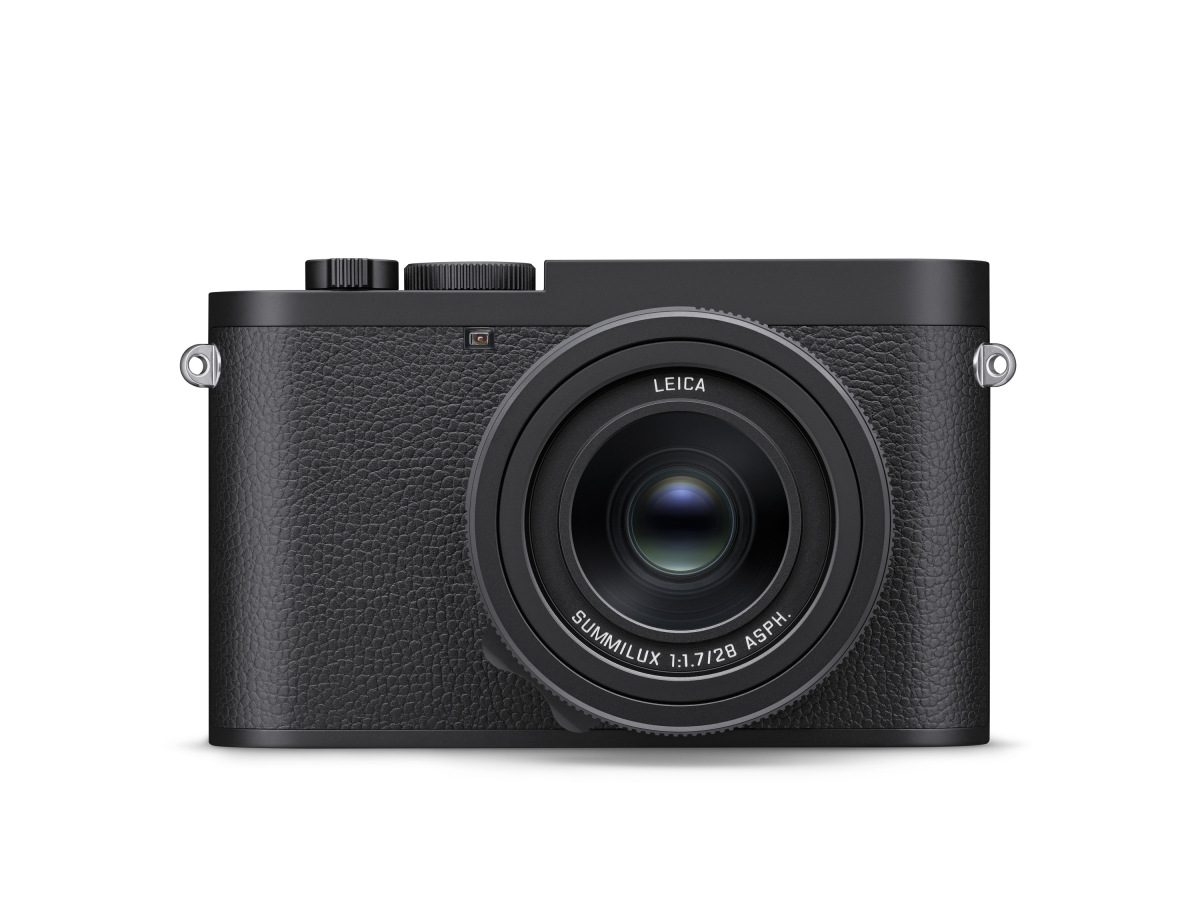
Finished in a discrete matte black paint, the Q3 Monochrom uses the same elegant black mid-grain leatherette found on the Q2 Monochrom and M11 Monochrom rather than the more modern diamond-pattern covering of the standard Q3. Like previous Monochrom models, there’s no Leica dot on the front and no script engraving on the top. A very subtle ‘MONOCHROM’ etched in black-on-black ahead of the hot shoe declares its namesake, with the standard ‘LEICA CAMERA / WETZLAR GERMANY' in white on the back. All lens and dial markings are rendered entirely in shades of gray and white, maintaining the camera’s fully monochromatic aesthetic.

Leica has employed the same fixed Summilux 28 mm f/1.7 ASPH lens used on the Q2M and standard Q3. The optical design remains unchanged, delivering exceptional resolving power, minimal distortion, excellent contrast, integrated optical image stabilization, and close-focus capability down to 17cm in macro mode. At this time, Leica has not indicated whether a Monochrom version of the 43 mm Q-series variant is planned.
Contrast Detect AF only
While the standard color Q3 incorporates on-sensor phase detect autofocus that works in unison with contrast detection, the Q3 Monochrom does not. PDAF requires dedicating selected pixels across the sensor to phase detection by partially masking sections of the photosite. This creates directional sensitivity that allows the camera to measure phase offset, but it also alters the structure and light-gathering behavior of those pixels compared to the rest of the array.

On a color sensor, these modified pixels are dispersed through the Bayer pattern and are blended during the demosaicing process, making any irregularities functionally invisible. On a Monochrom sensor, every pixel directly records luminance with no color filter array or interpolation, so even small architectural differences can lead to fixed-pattern artifacts, subtle banding under certain lighting conditions, or uneven tonal response. By omitting PDAF and relying on a refined contrast-based AF system, Leica prioritized a completely uniform sensor layout, maximizing per-pixel sensitivity and maintaining the smooth tonal transitions and exceptionally clean noise characteristics that define the Monochrom look.

Advantages of a Monochrom sensor
I've covered this topic in great detail in the past, putting Monochrom versions to the test against their color counterparts in multiple showdowns. And the results are always the same. Due to the lack of a Bayer color filter array, a monochrome camera offers around 1.5-2 stops better high ISO performance, while also producing sharper, more detailed images. When it comes to the Q3 Monochrom, you can expect the same advantage over the Q3, which already performs amazingly well up to around ISO 10,000. But we don't need to speculate. The M11 Monochrom has shown what the latest 60 megapixel BSI sensor can do sans CFA. Expect the Q3 Mono to shoot comfortably up to around ISO 32,000 with extremely low film grain-like noise, a noteable improvement compared to both the color Q3 and the Q2M it replaces.

Where does it fit?
The Q3 Monochrom now sits alongside the M11 Monochrom at the top of Leica’s dedicated black and white offerings, giving photographers a compact autofocus alternative with image quality and tonal performance on par with the flagship rangefinder, while preserving the simplicity and immediacy that define the Q series. It will pair nicely with an SL or M setup, or even with a color Q3.

Pricing, Ordering and Availability
Initial deliveries of the Leica Q3 Monochrom will start within the next week for a price of $7,790. As with any major Leica camera launch, supply will be probably be limited for a number of months. If you are interested in ordering the Q3 Monochrom, you can do so at Leica Store Miami by clicking the button below, calling 305-921-4433 or sending an email to info@leicastoremiami.com. If you are interested in trading in any other Leica equipment towards the purchase of the Q3 Monochrom, you can note it during the pre-order process.
New Accessories
Leica is releasing a small collection of new accessories alongside the Q3 Monochrom, all designed to complement the camera’s understated blacked-out aesthetic while expanding functionality and personalization options.
The lineup includes two new flat braided straps made from a rayon and leather cord blend. One comes in black (14696) to match the stealth look of the camera, while the other is offered in cognac (14698) for those who prefer a warmer, more classic feel.
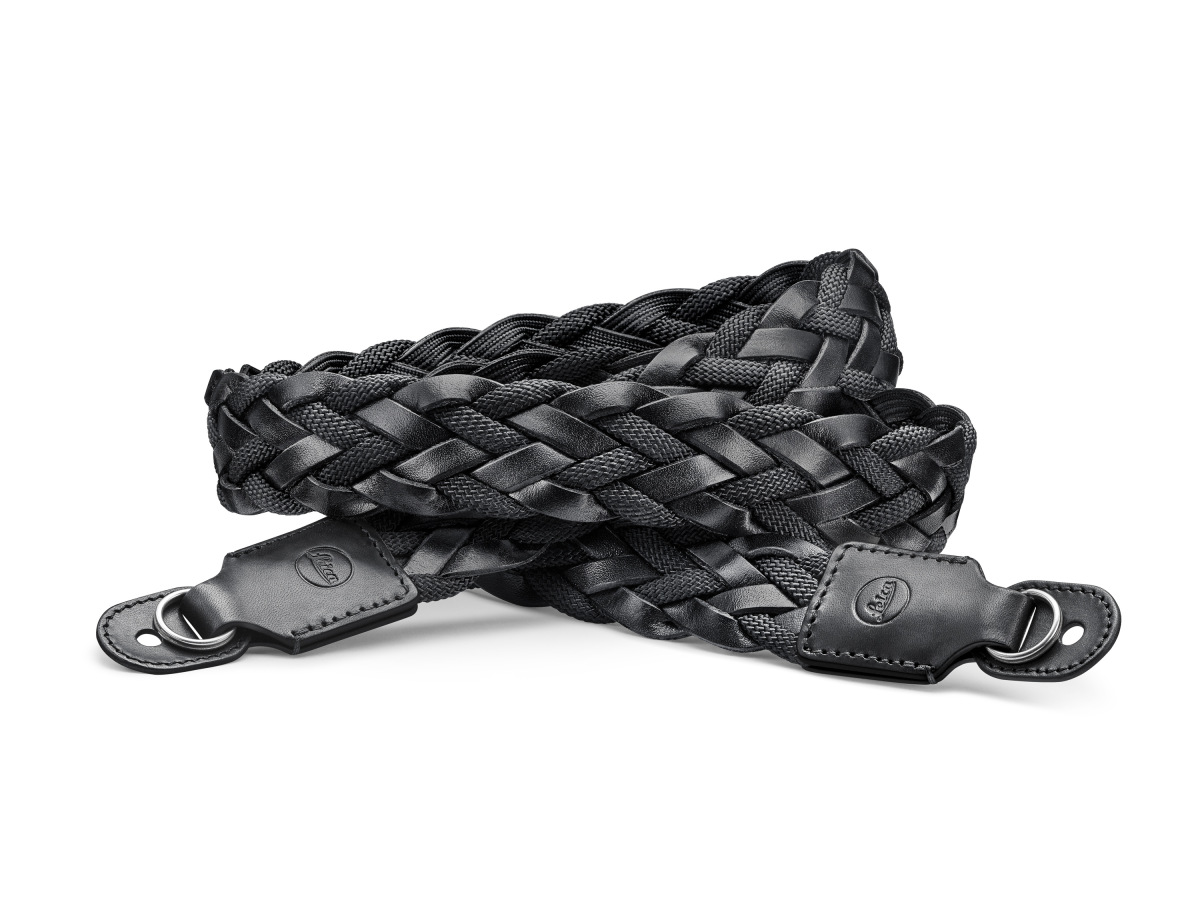

Leica is also introducing two round braided straps using the same material mix. The first appears in a monochromatic black and white pattern (14719), and the second combines cognac leather fittings with a denim blue cord (14720).
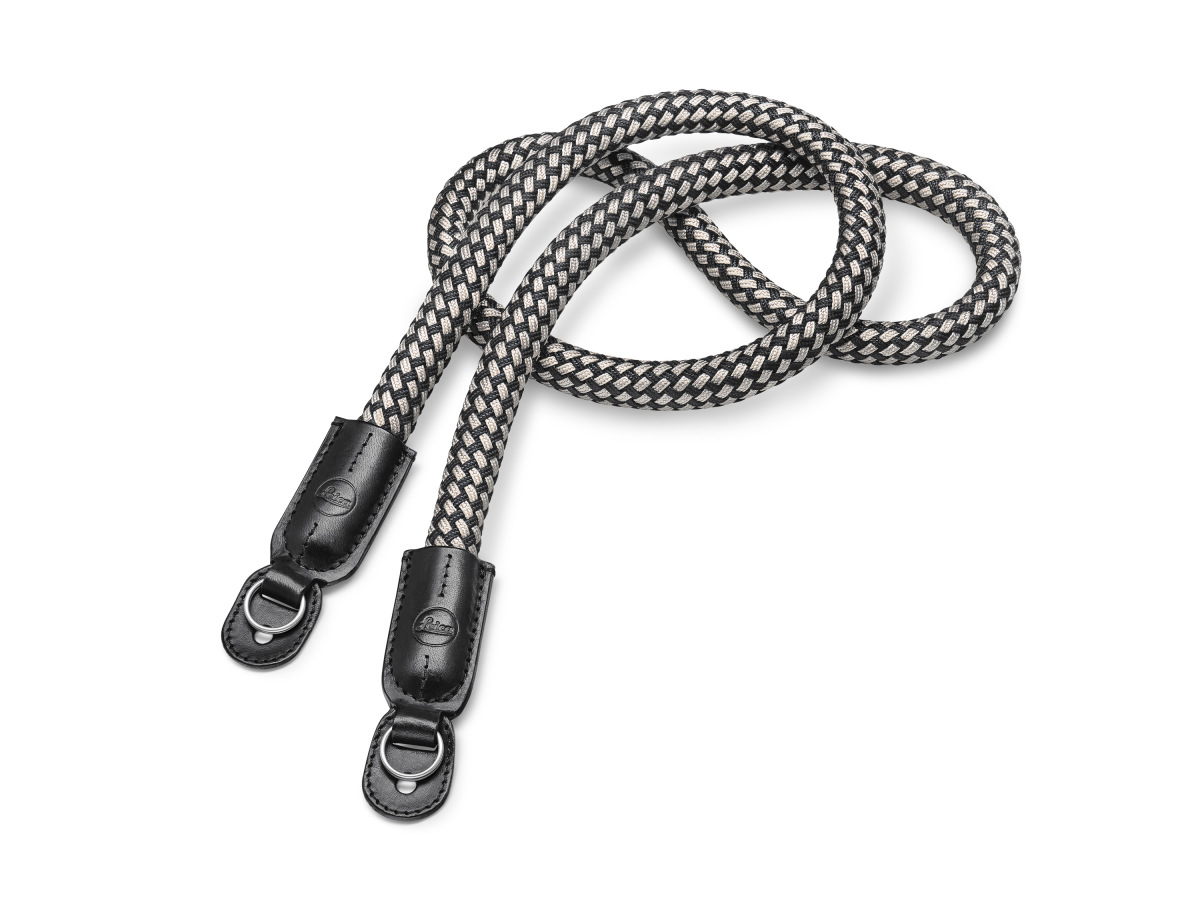
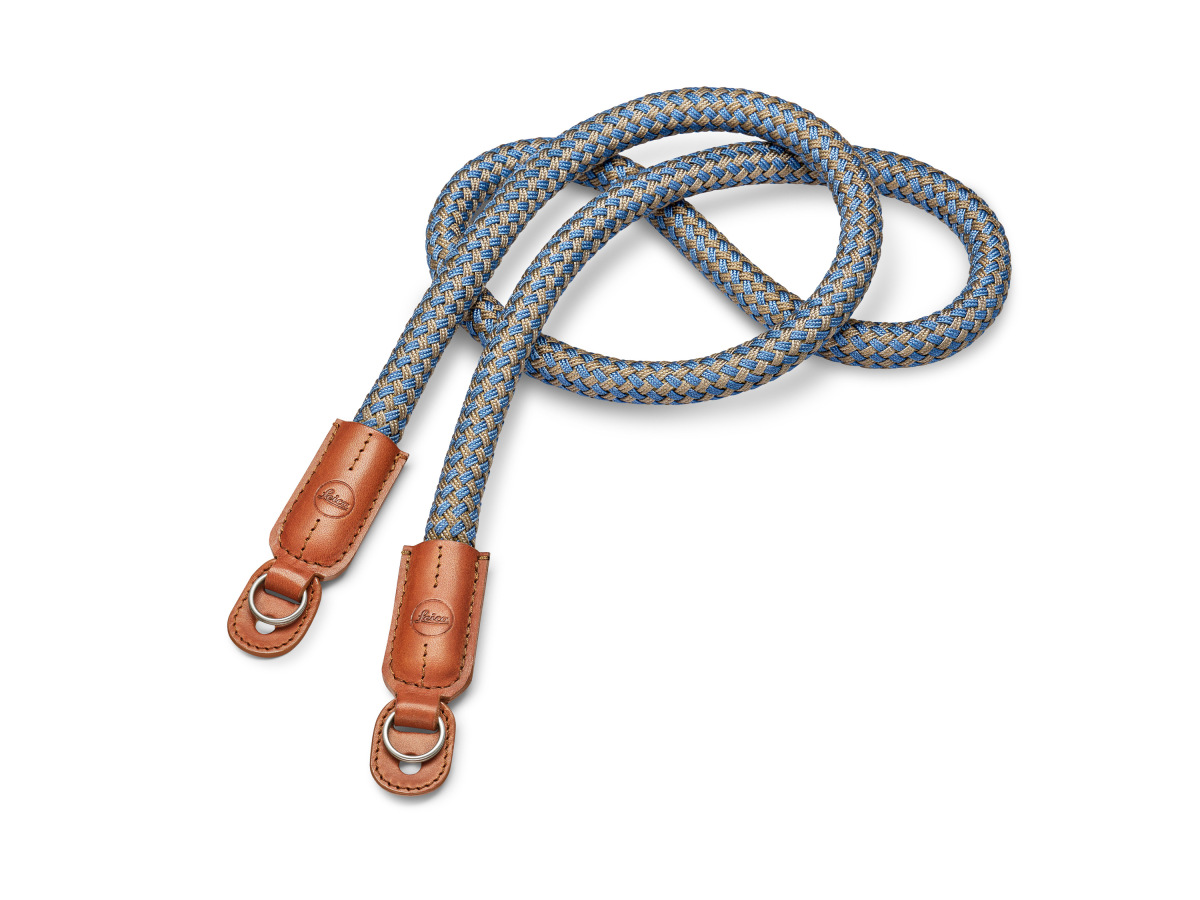
For improved handling, Leica offers a matching HG-DC 1 Monochrom Wireless Charging Handgrip (19697). It provides a more secure hold and adds Qi-compatible wireless charging when paired with Leica’s charging pad, making it possible to top up the battery simply by setting the camera down. Of course, the standard Q3 handgrip is fully compatible, but won't match the camera's leatherette wrapping.

Rounding out the accessories is a new red filter in E49 (19696). With its slim profile and black finish, it will sit inside the lens shade of the Summilux 28mm lens while offering the dramatic contrast boost and deeper tonal separation so many photgraphers love. The existing orange filter is still a great choice if you want some contrast, but not the black skies and white trees you'll get with red.
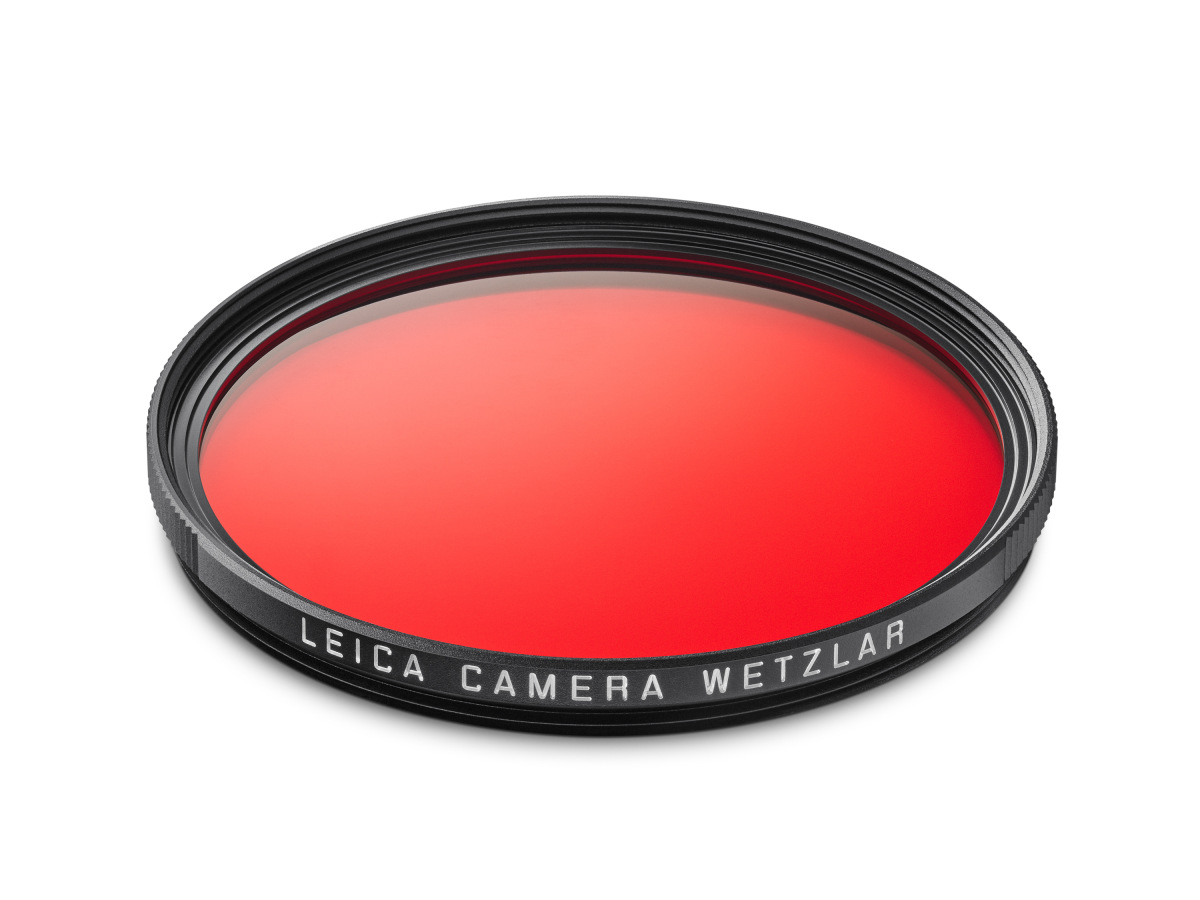
Q3M Compared to Q2M
| Leica Q3 Mono | Leica Q2 Mono | |
| Sensor | 60.3 MP CMOS BSI | 47.3 MP CMOS |
| Processor | Maestro IV | Maestro III |
| Digital Zoom | 28 / 35 / 50 / 75 / 90mm | 28 / 35 / 50 / 75mm |
| LCD Screen | 3“ TFT monitor (1.84 mil. pixel), touch, tiltable | 3“ TFT monitor (1.04 mil. pixel), touch |
| EVF | OLED, 0.5“ 4:3, 5.76mp | OLED, 0.5“ 4:3, 3.68mp |
| ISO Range | 100 – 200,000 | 100 – 100,000 |
| Content Credentials | Yes, via hardware chip | No |
| HDMI / USB-C | Yes (Type-D 2.0) / Yes (USB-C 3.1) | No / No |
| Inductive Charging | Yes, via optional handgrip | No |
| Battery | 2200mAh (BP-SCL6) | 1860mAh (BP-SCL4) |
| Variable Resolution | Yes | No |
| Video | FHD, 4k, C4K, 8K, MP4 + MOV, .h265, ProRes (1080p) | FHD, 4k, C4k, MP4 + MOV |
| Function Buttons | 4 | 2 |
| Bluetooth / MFI | Yes / Yes (10x faster transfers) | Yes / No |
Leica Sample Images
Leica has provided a nice selection of sample images from the new Q3 Monochrom which you can see larger by clicking on the thumbnails below. The images really show off dynamic range, high ISO capability and the unique rendering of the 28mm Summilux lens.








Tech Sepcs – Photo
| Designation | Leica Q3 Monochrom |
| Camera type | Digital 35mm compact camera |
| Type No. | 6506 |
| Order No. | 19 200 EU/US/CN, 19 201 JP, 19 202 ROW |
| Buffer memory | 8 GB |
| Capacity (buffer, approx.) | DNG / DNG+JPG / JPG 15 fps: 63 / 63 / 67 9 fps: 70 / 66 / 76 7 fps: 74 / 69 / 83 5 fps: 79 / 70 / 90 4 fps: 83 / 72 / 104 2 fps: 164 / 88 / 947 |
| Storage medium | UHS-II (recommended), UHS-I, SD/SDHC/SDXC memory card |
| Material | Full metal housing: magnesium die-cast, leather covering, protection type IP52 |
| Operating conditions | 0°C to +40°C |
| Interfaces | ISO accessory shoe with additional control contacts for Leica flash units, HDMI jack Type D, USB 3.1 Gen 2 Type C up to 10 Gbps |
| Tripod thread | A 1⁄4 DIN 4503 (1⁄4”) with stainless steel in the base |
| Dimensions | Approx. 130.0 mm × 80.3 mm × 92.6 mm |
| Weight | Approx. 746 g / 662 g (with / without battery) |
| Sensor | CMOS sensor, 62.39 MP / 60.3 MP (total / effective) |
| Processor | Leica Maestro series (Maestro IV) |
| Filter | No low-pass filter |
| File formats (Photo) | DNG™ (raw data), DNG + JPG, JPG (DCF 2.0, Exif 3.0) |
| Image resolution (Photo) | DNG™ 9520 × 6336 pixels (60.3 MP) 7404 × 4928 pixels (36.5 MP) 5288 × 3518 pixels (18.6 MP) JPG 9520 × 6336 pixels (60.3 MP) 7392 × 4928 pixels (36.4 MP) 5280 × 3512 pixels (18.5 MP) |
| File size (Photo) | DNG™: approx. 70 MB, depending on resolution and image content JPG: depending on resolution and image content |
| Bit depth (Photo) | DNG™: 14 bit / 12 bit; JPG: 8 bit |
| Lens | Leica Summilux 28mm f/1.7 ASPH, 11 lenses in 9 segments, 3 aspherical lenses |
| Lens filter thread | E49 |
| Digital zoom | Optionally approx. 1.25× (equivalent to 35mm), approx. 1.7× (50mm), approx. 2.7× (75mm), or approx. 3.2× (90mm) |
| Image stabilization | Visual compensation system for photos and video recordings |
| Aperture range | F1.7 to F16 in 1⁄3 EV increments |
| Shutter type | Mechanical central shutter or optional electronic shutter |
| Shutter speeds | Mechanical shutter: 60 min to 1⁄2000 s Electronic shutter: 60 s to 1⁄16000 s Flash synchronization: up to 1⁄2000 s |
| Shutter button | Two-stage (1st stage: activation of camera electronics including autofocus and exposure metering; 2nd stage: taking the picture) |
| Self-timer | Delay time: 2 s or 12 s |
| Drive Mode | Single, Continuous Shooting, Interval Shooting, Exposure Bracketing, Multi-Shot |
| Continuous shooting details | 2 fps, 14 bit, AF (mechanical or electronic shutter): automatic settings (P/A/S exposure, auto white balance, autofocus) applied individually for each frame. 4 fps, 14 bit, AF / 5 fps, 12 bit, AF / 7 fps, 14 bit, AF (mechanical or electronic shutter): same as above. 9 fps, 12 bit, AF / 15 fps, 12 bit, AF (electronic shutter): automatic settings applied for the first frame and then held for the series. |
| Focus range | 30 cm to ∞; with macro setting: from 17 cm |
| Focus mode | Automatic or manual; with manual setting, optional magnifying glass function (Auto Magnification) and edge marking (Focus Peaking) available as focus assist |
| Autofocus system | Contrast detection |
| Autofocus modes | Intelligent AF (automatically refocuses as soon as something changes in the scene), AFs, AFc; AF setting can be saved; optional Touch AF |
| Autofocus metering methods | Spot (can be shifted), Field (can be shifted and scaled), Multi-field, Zone (can be shifted and scaled), Eye/Face/Body Detection, Animal Detection (Beta), Tracking |
| Autofocus metering fields | 315 |
| Exposure metering | TTL (exposure metering through the lens), with working aperture |
| Metering principle | Exposure metering is done by the image sensor for all exposure metering methods |
| Exposure metering methods | Spot, Center-Weighted, Highlight-Weighted, Multi-Field |
| Exposure modes | Program AE mode (P) Aperture-priority mode (A) Shutter-priority mode (S) Manual (M) Fully automatic variants (Scene Mode): AUTO, Digiscoping |
| Exposure compensation | ±3 EV in 1⁄3 EV increments |
| Automatic bracketing | 3 or 5 frames; increments up to 3 EV in 1⁄3 EV steps; additional optional exposure compensation up to ±3 EV |
| ISO sensitivity range (Photo) | Auto ISO ISO 200–ISO 200,000 Manual ISO ISO 100–ISO 200,000 |
| Dual Basis ISO settings (Photo) | Low Basis-ISO Photo: ISO 100–ISO 560 High Basis-ISO Photo: ISO 640–ISO 200,000 |
| Flash unit connector | Via the accessory shoe |
| Flash sync time | 1⁄2000 s, slower shutter speeds available. High-speed shutter times between 1⁄2500 s and 1⁄16000 s are available only via the electronic shutter. Shorter shutter speeds, however, are only available via the mechanical shutter. |
| Flash exposure metering | Using center-weighted TTL pre-flash metering with Leica flash units (SF 26, SF 40, SF 58, SF 60, SF 64) or with system-compatible flash units; remote-controlled flash SF C1 |
| Flash exposure compensation | SF 40: ±2 EV in 1⁄2 EV increments; SF 60: ±2 EV in 1⁄3 EV increments |
| Microphone | Stereo |
| USB Audio | Compatible RØDE USB audio devices include: VideoMic GO II, VideoMic NTG, Wireless GO II, Wireless ME, and other supported USB microphones. |
| Speaker | Mono |
| WLAN | WLAN function for connecting to the Leica FOTOS app (available from the Apple App Store™ or Google Play Store™). 2.4 GHz EU/US/CN: IEEE802.11b/g/n, channel 1–11 (2412–2462 MHz) 5 GHz EU/US/CN – Client mode (for indoor use only): IEEE802.11a/n/ac, channel 36–64 (5180–5320 MHz) EU/US/CN – Access point + client mode: IEEE802.11a/n/ac, channel 149–165 (5745–5825 MHz) JP – Access point + client mode (for indoor use only): IEEE802.11a/n/ac, channel 36–48 (5180–5240 MHz) JP – Client mode (for indoor use only): IEEE802.11a/n/ac, channel 52–144 (5260–5720 MHz) ROW: – Maximum output (e.i.r.p.): <14 dBm; encryption: WLAN-compatible WPA™ / WPA2™ / WPA3™ |
| Bluetooth | Bluetooth 5.0 LE: Channel 0–39 (2402–2480 MHz), maximum output (e.i.r.p.): 10 dBm |
| GPS | Not available everywhere due to country-specific legislation; can be added via the Leica FOTOS app. Data is written to Exif header of the picture files. |
| Menu languages | English, German, French, Italian, Spanish, Portuguese, Russian, Japanese, Traditional Chinese, Simplified Chinese, Korean |
| Rechargeable battery (Leica BP-SCL6) | Lithium-ion rechargeable battery; rated voltage: 7.2 V (DC); capacity: 2200 mAh (min.); 302 shots (based on CIPA standard); 1535 shots (based on CIPA standard with adapted shooting cycle*). Manufacturer: Panasonic Energy (Wuxi) Co. Ltd., Made in China. *Cycle 1: Switch on, 1st shutter release after 5 s, one shot every 3 s; camera switches off after 10 shots (Auto Power Off) and is switched back on after a waiting time of 5 min. *Cycle 2: Switch on, 1st shutter release after 5 s, one shot every 3 s; camera switches off after 50 shots (Auto Power Off) and is switched back on after a waiting time of 5 min. These cycles are repeated alternately until the battery is empty. |
| USB-C power adapter (Leica ACA-SCL6, optional) | Input: AC 100–240 V, 50/60 Hz, 0.25 A, automatic switchover; Output: DC 5 V / 9 V, 3 A. Manufacturer: Salom Electric (Xiamen) Co., Ltd., Made in China. |
| Charger (Leica BC-SCL4, optional) | Input: AC 100–240 V, 50/60 Hz, 0.25 A, automatic switchover; Output: DC 8.4 V 0.85 A. Manufacturer: Salom Electric (Xiamen) Co., Ltd., Made in China. |
| USB-C DC Coupler (Leica DC-SCL6) | Input: DC 9 V / 3 A (min.); Output: DC 9 V (with ACA-SCL6); supports USB PD 3.1. Manufacturer: Salom Electric (Xiamen) Co., Ltd., Made in China. |
| Charging via USB | During operation: 9 V / 3 A (min. 27 W) With camera switched off: 5 V / 1500 mA (2.5 W or greater) |
| Wireless charging | Optimal performance with 9 V chargers (10 W Charging Pad required) |
| Rated values for input voltage / power | 7.2 V 2.3 A (battery), 5 V 3.0 A / 9 V 2.5 A (USB) |
| Scope of Delivery | Leica Q3 Monochrom • BP-SCL6 battery • USB-C cable • Lens hood • Lens cap • Hot shoe cover • Carrying strap • Instructions booklet |
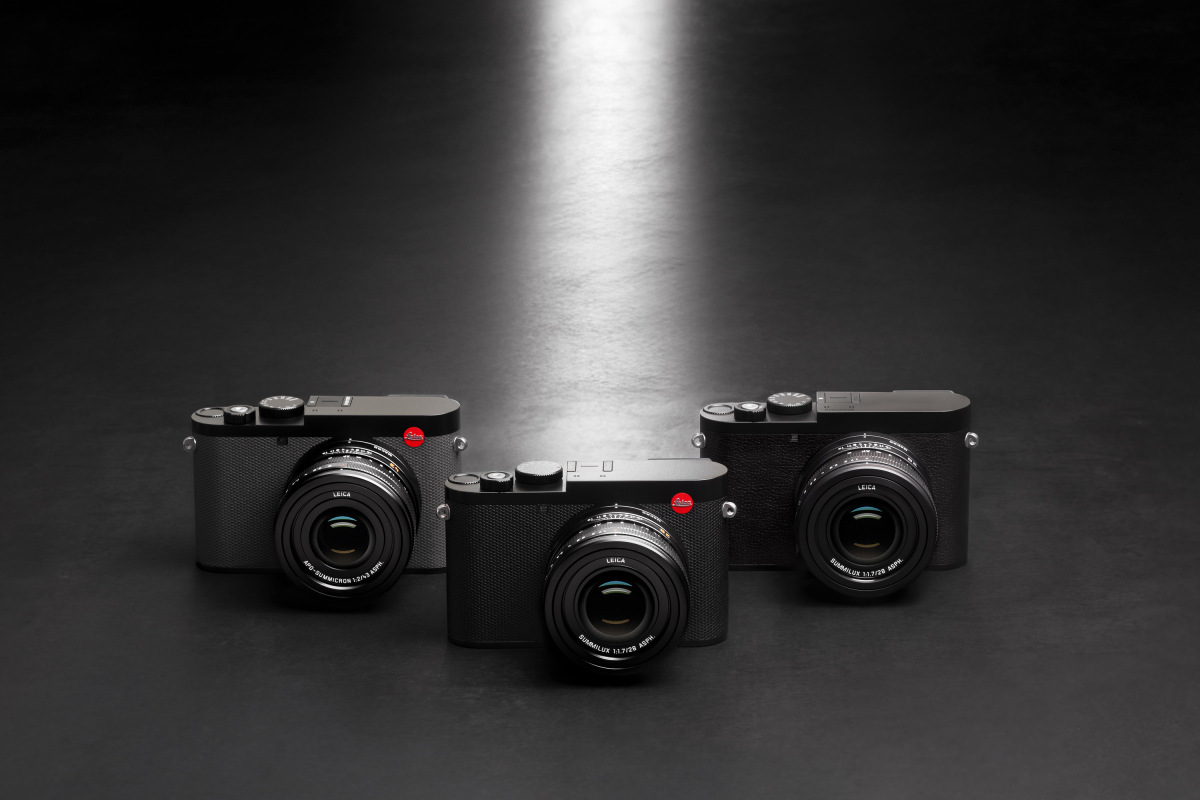
Tech Specs – Video
| File formats (Video) | MP4 h.265 AAC 48 kHz / 16 bit MP4 h.264 AAC 48 kHz / 16 bit MOV h.265 LPCM 48 kHz / 24 bit MOV h.264 LPCM 48 kHz / 24 bit ProRes LPCM 48 kHz / 24 bit |
| Video length | Max. 29 min |
| Video resolution | C8K: 8192 × 4320 (17:9) 8K: 7680 × 4320 (16:9) C4K: 4096 × 2160 (17:9) 4K: 3840 × 2160 (16:9) Full HD: 1920 × 1080 (16:9) |
| Video frame rate / bit rate (MP4) | MP4 8K (7680 × 4320) 29.97 fps, 300 Mbps, 4:2:0 / 10 bit, Long GOP, HEVC 25.00 fps 23.98 fps MP4 4K (3840 × 2160) 59.94 fps, 100 Mbps, 4:2:0 / 8 bit, H.264 50.00 fps 29.97 fps 25.00 fps 23.98 fps MP4 FHD (1920 × 1080) 59.94 fps, 28 Mbps 50.00 fps, 28 Mbps 29.97 fps, 20 Mbps 25.00 fps, 20 Mbps 23.98 fps, 24 Mbps |
| Video frame rate / bit rate (MOV) | MOV C8K (8192 × 4320) 29.97 fps, 300 Mbps, 4:2:0 / 10 bit, Long GOP, HEVC 25.00 fps 24.00 fps 23.98 fps MOV 8K (7680 × 4320) 29.97 fps 25.00 fps 24.00 fps 23.98 fps MOV C4K (4096 × 2160) 59.94 fps, 600 Mbps, 4:2:2 / 10 bit, ALL-I, H.264 50.00 fps 48.00 fps 47.95 fps 29.97 fps, 400 Mbps 25.00 fps, 400 Mbps 24.00 fps, 400 Mbps 23.98 fps, 400 Mbps MOV 4K (3840 × 2160) 59.94 fps, 600 Mbps 50.00 fps 48.00 fps 47.95 fps 29.97 fps, 400 Mbps 25.00 fps, 400 Mbps 24.00 fps, 400 Mbps 23.98 fps, 400 Mbps MOV FHD (1920 × 1080) 119.88 fps, 200 Mbps 100.00 fps, 200 Mbps 59.94 fps, 200 Mbps 50.00 fps, 200 Mbps 48.00 fps, 200 Mbps 47.95 fps, 200 Mbps 29.97 fps 25.00 fps 24.00 fps 23.98 fps MOV FHD Slow Motion (1920 × 1080) Sensor: 119.88 fps; Recording: 29.97 fps, 100 Mbps, 4:2:0 / 10 bit, Long GOP, HEVC Sensor: 100.00 fps; Recording: 25.00 fps MOV FHD ProRes (422HQ – ProRes, 1920 × 1080) 59.94 fps: 454 Mbps 50.00 fps: 378 Mbps 29.97 fps: 227 Mbps 25.00 fps: 189 Mbps 24.00 fps: 182 Mbps 23.98 fps: 181 Mbps |
| ISO sensitivity range (Video / L-Log / HLG) | Auto ISO Video: ISO 200–ISO 200,000 L-Log / HLG: ISO 800–ISO 200,000 Manual ISO Video: ISO 100–ISO 200,000 L-Log / HLG: ISO 100–ISO 200,000 |
| Dual Basis ISO (Video / L-Log / HLG) | Low Basis-ISO Video: ISO 100–ISO 560 L-Log / HLG: ISO 800–ISO 2200 High Basis-ISO Video: ISO 640–ISO 200 000 L-Log / HLG: ISO 2500–ISO 200,000 |

Leave a Reply